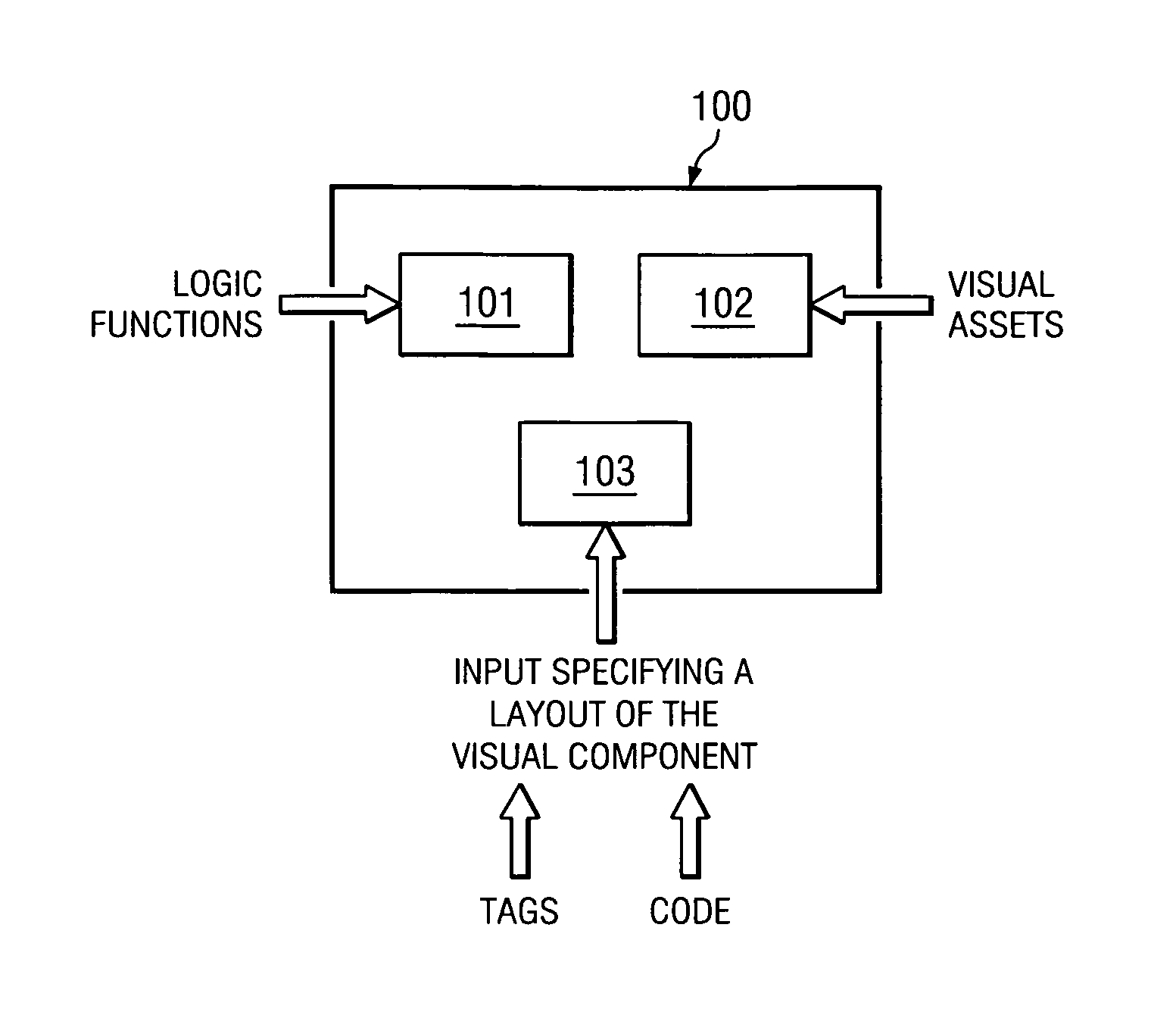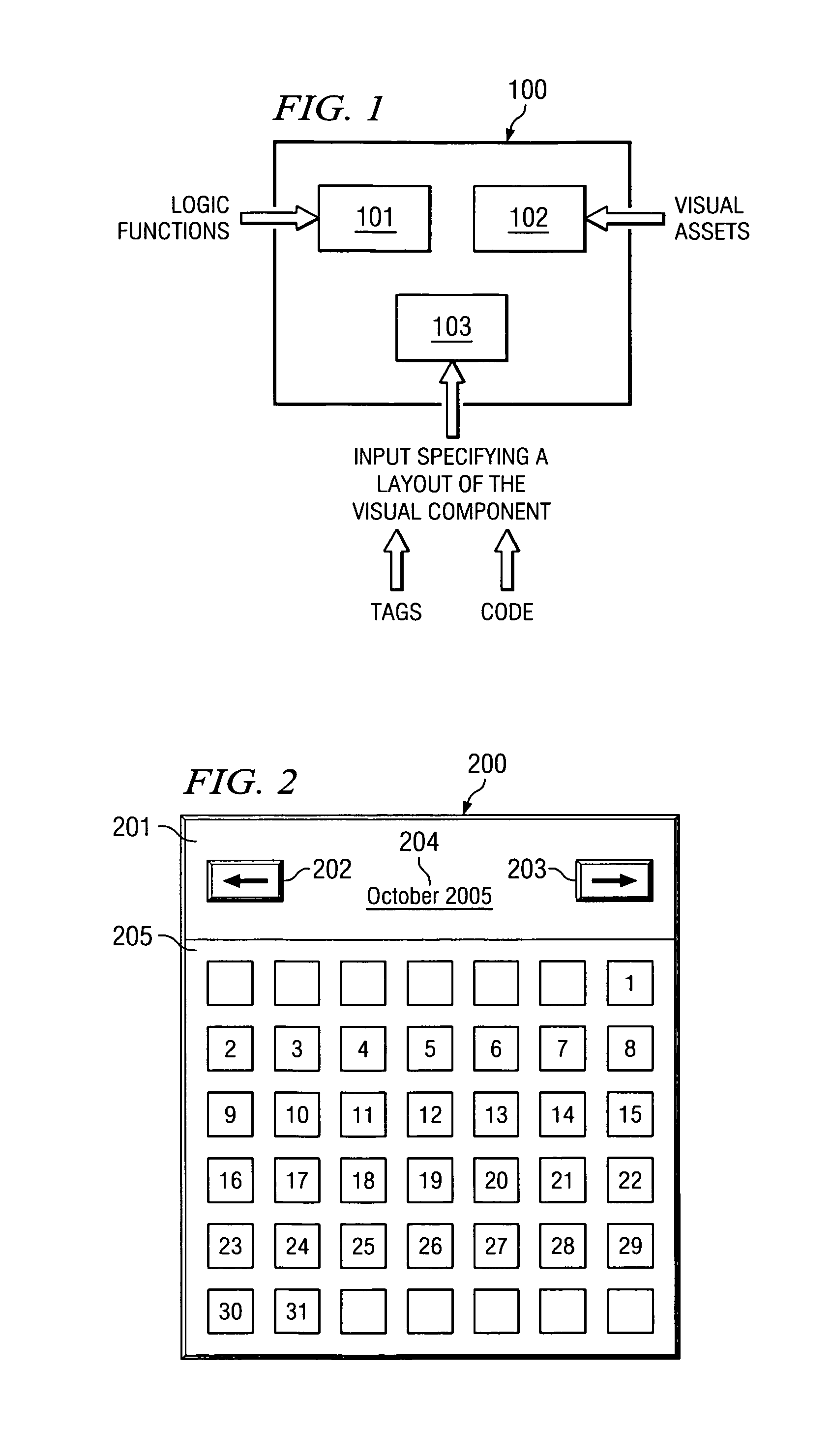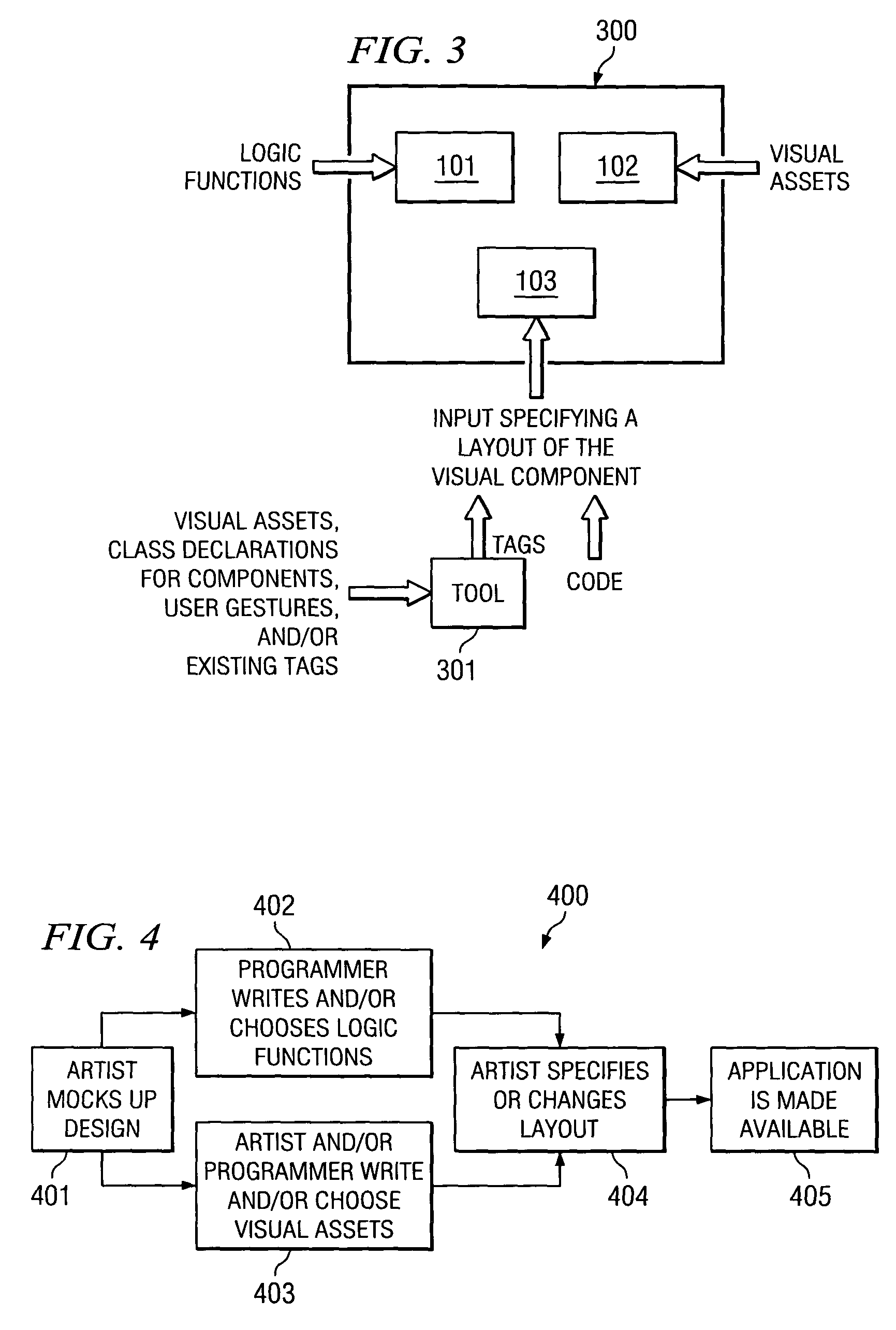System and method for providing visual component layout input in alternate forms
a visual component and layout input technology, applied in the direction of instruments, computing, electric digital data processing, etc., can solve the problems of limiting the expressive and artistic application of artists/designers, unable to directly change the appearance of visual assets, and unable to arrange visual assets in a pleasing way
- Summary
- Abstract
- Description
- Claims
- Application Information
AI Technical Summary
Benefits of technology
Problems solved by technology
Method used
Image
Examples
Embodiment Construction
[0020]FIG. 1 is an illustration of example system 100 adapted according to one embodiment of the invention. In one specific example, system 100 is a FLEX™ compiler that is modified to compile a tag-based description of a layout of artwork (i.e., assets) in a visual component. System 100 includes three functional units 101-103.
[0021]Functional unit 101 receives input defining logic functions of a visual component. The input is usually in the form of code. For example, in a FLEX™ embodiment, a programmer uses ACTIONSCRIPT™ code to describe the various logic functions. It should be noted that ACTIONSCRIPT™ code is also used to create the class declaration of the component and the function to draw the various parts of the visual component. In fact, the input defining the logic functions and the class declaration for the component are usually included in the same file.
[0022]Functional unit 102 receives input defining the visual assets to be arranged in the component. Examples include ico...
PUM
 Login to View More
Login to View More Abstract
Description
Claims
Application Information
 Login to View More
Login to View More - R&D
- Intellectual Property
- Life Sciences
- Materials
- Tech Scout
- Unparalleled Data Quality
- Higher Quality Content
- 60% Fewer Hallucinations
Browse by: Latest US Patents, China's latest patents, Technical Efficacy Thesaurus, Application Domain, Technology Topic, Popular Technical Reports.
© 2025 PatSnap. All rights reserved.Legal|Privacy policy|Modern Slavery Act Transparency Statement|Sitemap|About US| Contact US: help@patsnap.com



